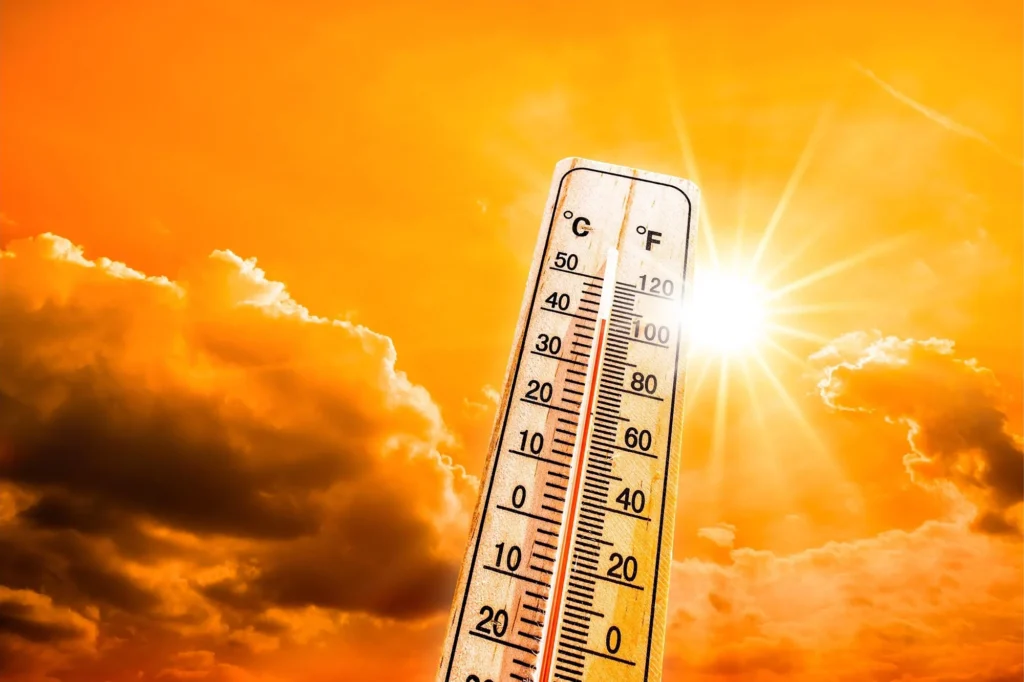Not sold on setting your thermostat to 78 degrees? These tips will help you set it at the right temperature for you.

One of the most widely used statistics online is 78 degrees Fahrenheit, which has been the target thermostat setting in summer. That standard came in 2019 from ENERGY STAR, a federal program of the Department of Energy and Environmental Protection Agency. The goal was for consumers to get needed cooling while saving energy. Five years later, consumers are sweating out record-breaking heat waves and spending more time at home. That 78 degrees sounds even less appealing now than it did in 2019, and experts and homeowners are looking for a cooler solution.
The savings from a higher temperature are undeniable. You’ll save about 3% on your utility bill for every degree you raise the set temperature for your central air, says the Department of Energy. But despite that benefit, Americans keep their thermostats set at about 71 degrees day and night, according to a “Consumer Reports” survey from June 2021. CR recommends looking for a “happy medium” between staying cool and lowering your energy bill. For example, you can raise the temperature one degree at a time to see how it affects your household’s comfort and finances.
The standardization of the past has given way to flexibility, says DR Richardson, founder of Elephant Energy based in Colorado and Massachusetts. “Every home and every homeowner are a little bit different. We never recommend one static temperature day in and day out for any homeowner. It really has to reflect what the homeowner’s goals are, the homeowner’s budget, how efficient their system is, what condition their HVAC is in, and the evenness of the cooling.”
Tips to Beat the Heat Inside Your Home
Richardson offers these tips to help you keep your cool during a scorching heat waves
- Know your household’s habits and goals. So, even though some people turn their AC way down at night to save money, you may have a hard time sleeping when it’s hot. “So, having a lower temperature at night might actually make sense,” Richardson says.
- Wait to lower the AC after the first time. If you’re uncomfortably warm after lowering the AC, wait a while before going into panic mode and turning the setting down a few more times. An HVAC system takes a long time to respond to changes in a thermostat. The temperature in the house has to adjust to not just the air, but also heat from the sun, the leakiness of the home, and the temperature of the walls and objects like furniture and rugs.
- Limit your activities to areas of your house that tend to be the coolest. Those could be rooms with fewer windows or downstairs, where it’s typically cooler. That will help you avoid the uneven temperatures that are almost inevitable in a house. “The thermostat is reading one temperature in one part of the house, and it’s really hard to get that temperature evenly distributed across the entire building,” he says.
- Consider mini-splits. These heating and cooling systems allow you to control the temperatures in individual rooms or spaces without ductwork. “It’s sort of twice the size of a breadbox and sticks on a wall,” Richardson says. “It provides airflow in just that room. It’s like zoning, only way better.” You need a box in each room, but you can set the temperature in one room at, say, 68 degrees and in another room at 78.
- Set your thermostat so the fan runs more frequently. If you have an Ecobee or a Nest, you can set the fan to run continuously. “When you have a forced air system, oftentimes the hot air rises. so you get a really warm second floor. But if you run the fan, you can be cycling the air throughout the entire house, which creates a much more even temperature.”
Maybe it’s time to throw out the 78-degree setting standard this summer. Instead, set your thermostat to keep your household cool and comfortable – without breaking the bank.
“Visit Houselogic.com for more articles like this. Reprinted from houselogic.com with permission of the National Association of Realtors®”
